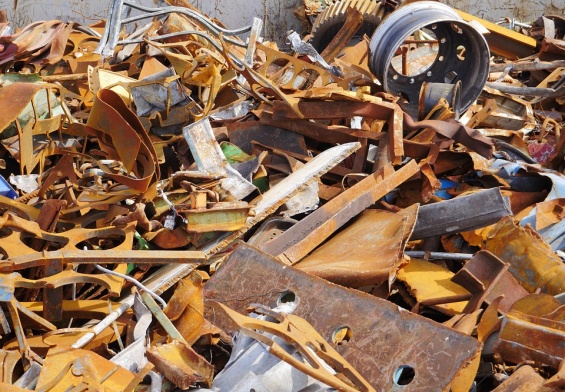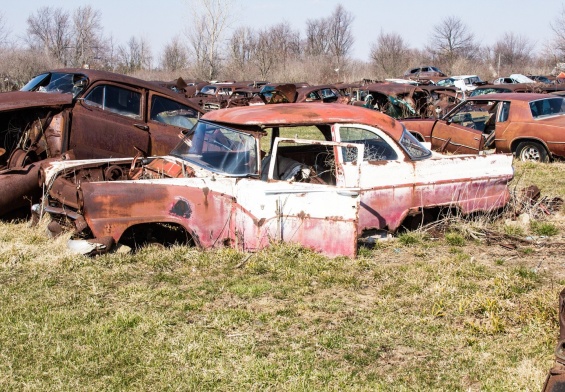Modern automotive engineering is certainly a marvel of human ingenuity, especially when it comes to the diverse set of materials that make up our cars. This choice of materials has a huge impact on the car’s performance, safety when faced with snow-related holiday car accidents, efficiency, and aesthetic appeal. In this article, we’ll talk about a lot of the primary materials used in car manufacturing and their specific applications, showcasing the complex mixture of metals, plastics, and other compounds that create the cars we drive today.
Metals in Car Manufacturing
Steel in Cars
Steel in cars is a huge part of the manufacturing process due to its affordability, durability, and versatility. It forms the skeleton of a vehicle’s structure, including the chassis, body panels, door beams, roofs, and several support components. Approximately 2,400 pounds of steel is used in average cars, while larger vehicles like SUVs and pickup trucks can contain up to 3,000 pounds. Advances in steel technology have led to high-strength steels that provide a lot of impact absorption, keeping passengers safe during collisions. Steel is also used to create crumple zones that deform and absorb energy upon impact, further protecting vehicle occupants in a crash.
Aluminum
Aluminum is seeing more and more use in the automotive industry, especially in luxury and performance vehicles, because it’s strong and lightweight. Being 33% lighter than magnesium and 75% lighter than steel, aluminum boosts fuel efficiency and overall vehicle performance significantly. Aluminum car parts include wheels, cylinder heads, body panels, and transmission housings. The inclusion of aluminum in the build reduces the vehicle’s overall weight, so it handles better and is more agile. Many supercars and other high-performance vehicles, like the Acura NSX and Audi R8, are built with aluminum to for greater speed and control.
Other Metals
Titanium and magnesium are also notable for their use in high-end and performance vehicles. Titanium’s strength and lightweight properties make it ideal for engine components and body frames, while magnesium helps balance vehicle weight distribution effectively. Additionally, metals like copper, lead, palladium, platinum, and rhodium are important for making electrical systems, battery components, and catalytic converters, each of which contributes to the vehicle’s overall functionality and efficiency.
Non-Metallic Materials
Plastics
Plastics play a huge role in modern car manufacturing, offering versatility, durability, and a lightweight nature. Almost 50% of a vehicle’s components are plastic car components, including interior elements like dashboards, trims, and air vents, as well as exterior parts like bumpers and gas tanks. Plastics are used like this because they’re flexible and resistant to corrosion, so they’re ideal for crafting intricate and varied car parts. The ability to mold plastics into almost any shape allows tons of room for customization and innovation when it comes to car design.
Rubber
Rubber is an important part of several car components, with tires being the most obvious and important application. Made from natural and synthetic rubber, tires provide the necessary traction and stability for vehicles, directly impacting fuel efficiency and safety. In addition to tires, rubber is also used in engine mounts, seals, hoses, belts, and wiper blades, all of which need to be durable and able to withstand heat and wear. In fact, the automotive industry’s demand for rubber makes up a large portion of global rubber production, demonstrating how important it is in car manufacturing.
Glass in Cars
Glass in cars is another essential material, mainly used in windshields and windows to ensure visibility and passenger protection. The glass used in vehicles is usually laminated or tempered to make it stronger, and therefore safer. Laminated glass won’t shatter on impact, so there’s a lower risk of it injuring someone in an accident. The process of manufacturing automotive glass involves heating silica and other materials to create a strong, transparent product that can endure tons of stress and variations in temperature.
Advanced Materials
Carbon Fiber
Carbon fiber is used in a lot of sports and luxury cars due to its high strength-to-weight ratio. Common carbon fiber car parts include body panels, frames, and other critical components. These lead to significant weight reductions without sacrificing structural integrity, which goes a long way to improving performance and fuel efficiency.
Resin and Fiberglass
Resin and fiberglass composites are also used in car manufacturing for their durability and lightweight properties. These materials are typically found in body panels and other structural elements, striking a balance between strength and weight reduction.
Future Trends in Car Manufacturing Materials
As the automotive industry continues to evolve, the focus on material science only increases, driven by the need for better performance, safety, and environmental sustainability. Innovations are leading to more and more usage of sustainable and recyclable materials, shifting the roles of junk cars and trying to reduce car manufacturing’s impact on the environment. Advanced composites, bio-based plastics, and new metal alloys are leading the charge of this transformation, with many touting them as the future of automotive engineering.
The Impact of Car Manufacturing Materials
The car manufacturing materials used most often are a testament to the automotive industry’s ingenuity and technological prowess. From the robustness of steel to the lightweight benefits of aluminum car parts and the versatility of plastic car components, each material plays a huge role in building the cars of today and tomorrow. In the future, the ongoing development of new materials will only continue to enhance the efficiency, safety, and sustainability of vehicles, driving the industry forward.




